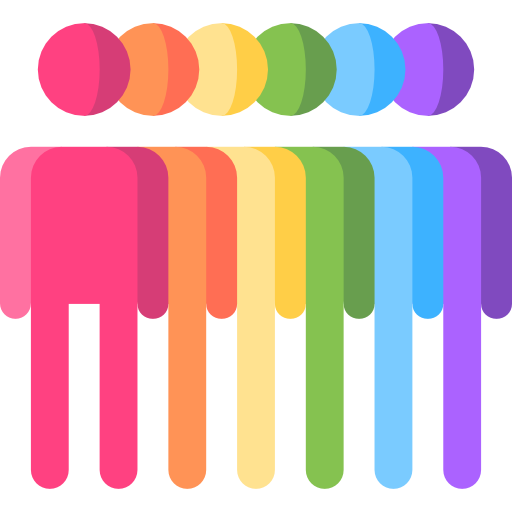Gay-Straight/Genders & Sexualities Alliances
Gay-Straight Alliances or Genders and Sexualities Alliances have been associated with improvements in school safety, a key component of school connectedness, for all students.
Research specifically links the presence of Gay-Straight Alliances or Genders and Sexualities Alliances (GSAs) to greater feelings of school connectedness among Lesbian, Gay, Bisexual, Transgender, and Questioning (LGBTQ) students.
GSAs are also linked to positive youth development and increasing young people’s sense of purpose, self-esteem, and agency. They have also been linked to reduced risk across health outcomes related to HIV and other STDs, including experiencing violence, illicit drug use and prescription drug misuse, and suicidal ideation. Prevention benefits have been documented for heterosexual youth in addition to LGBTQ youth.

Schools and local education agencies can create and implement a plan for establishing GSAs in schools that do not already have them and strengthening GSAs in schools that do.
Resources
- GSAN. Building Your GSA. This organization has a number of different resources for establishing and strengthening GSAs, including this resource on creating GSAs.
- GLSEN. Gay-Straight Alliances. This organization has a number of different resources for establishing and strengthening GSAs.
- CDC. School Health Profiles- Safe & Supportive Environments. This PowerPoint presentation provides an overview of the 2018 School Health Profiles findings including information on implementation of GSAs in schools across the U.S.
- CDC. Protective Factors for LGBTQ Youth. This webpage provides a summary of research on factors and approaches that have been found to improve health outcomes among LGBTQ youth, including GSAs.
- Marx RA, Kettrey HH. Gay-Straight alliances are associated with lower levels of school-based victimization of LGBTQ+ youth: a systematic review and meta-analysis. J Youth Adolesc. 2016;45(7):1269-1282.
- Saewyc EM, Konishi C, Rose HA, Homma Y. School-based strategies to reduce suicidal ideation, suicide attempts, and discrimination among sexual minority and heterosexual adolescents in Western Canada. Int J Child Youth Family Stud. 2014;5(1):89-112.
- Porta CM, Singer E, Mehus CJ, et al. LGBTQ youth’s views on gay-straight alliances: building community, providing gateways, and representing safety and support. J Sch Health. 2017;87(7):489-497.
- Diaz EM, Kosciw JG, Greytak EA. School connectedness for lesbian, gay, bisexual and transgender youth: in-school victimization and institutional supports. Prev Res. 2010;17(3).
- Poteat VP, Calzo JP, Yoshikawa H. Promoting youth agency through dimensions of gay-straight alliance involvement and conditions that maximize associations. J Youth Adolesc. 2016;45(7):1438-1451.
- Poteat VP, Yoshikawa H, Calzo JP, et al. Contextualizing gay-straight alliances: student, advisor, and structural factors related to positive youth development among members. Child Dev. 2015;86(1):176-193.
- Heck NC, Livingston NA, Flentje A, Oost K, Stewart BT, Cochran BN. Reducing risk for illicit drug use and prescription drug misuse: high school gay-straight alliances and lesbian, gay, bisexual, and transgender youth. Addict Behav. 2014;39(4):824-828.
- Coulter RW, Birkett M, Corliss HL, Hatzenbuehler ML, Mustanski B, Stall RD. Associations between LGBTQ-affirmative school climate and adolescent drinking behaviors. Drug Alcohol Depend. 2016;161:340-347.